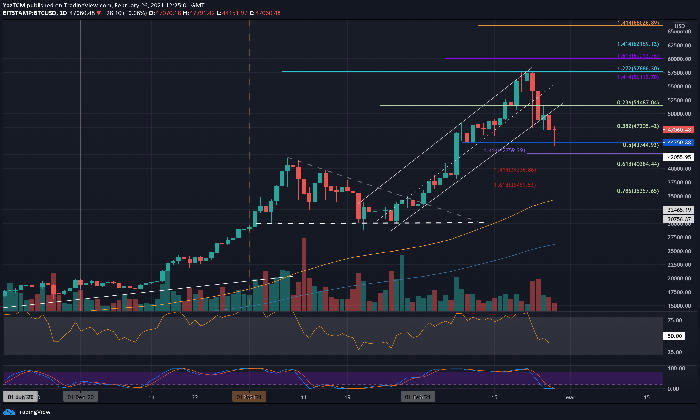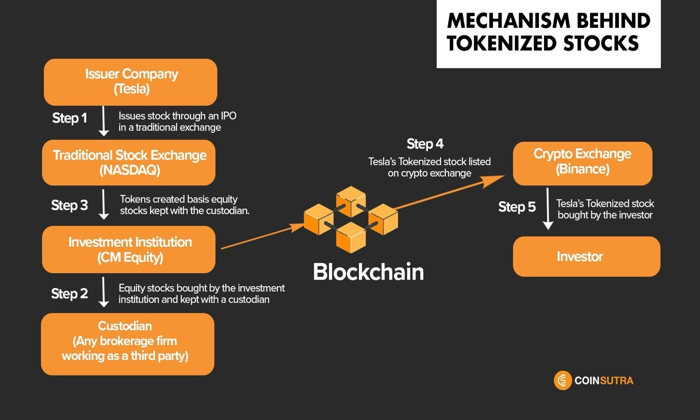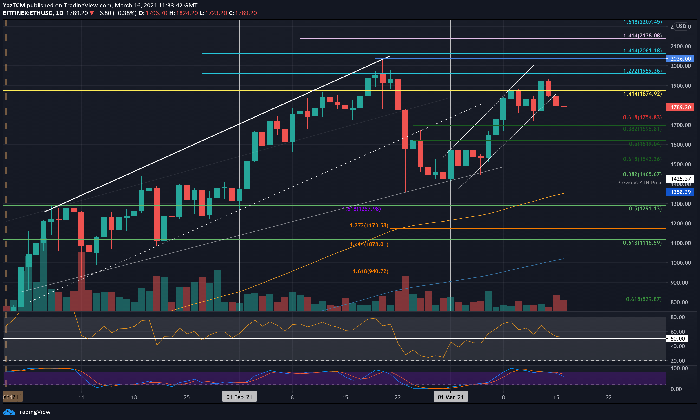In the evolving landscape of cryptocurrency, quantum computing Bitcoin stands at the forefront of both innovation and concern. As quantum technologies advance, they pose a potential threat to the integrity of Bitcoin security, casting a shadow over the efficacy of current cryptographic algorithms. The Q-Day Prize challenge has sparked significant interest, aiming to encourage researchers to explore quantum resistance in Bitcoin’s cryptography. If successful, contestants may uncover vulnerabilities that could change how we view the safety of digital assets and the true impact of the quantum threat. This competition highlights not just the risks but also the urgency of developing robust defenses to safeguard against possible quantum attacks.
As we delve into the realm of advanced computing, the concept of quantum encryption emerges as a significant factor influencing the future of digital currencies, particularly Bitcoin. The looming threat of quantum abilities to decipher traditional blockchain security measures has rallied experts and enthusiasts alike to seek out solutions that foster quantum resilience. Initiatives like the Q-Day Prize highlight the necessity for cutting-edge methods to defend transactions against potential breaches stemming from quantum technologies. By understanding the challenges presented by quantum computing, we can better appreciate the importance of initiating measures to protect cryptocurrencies from vulnerabilities that could be exploited. The race for creating a quantum-resistant Bitcoin ecosystem is a pivotal endeavor in ensuring trust and security within the digital economy.
Understanding the Q-Day Prize Challenge
The Q-Day Prize Challenge offers a significant incentive for cryptographers and quantum computing experts to explore the vulnerabilities within Bitcoin’s cryptographic framework. Officially announced by Project 11 on April 16, 2025, contestants are tasked with breaking a simplified version of Bitcoin’s cryptography using quantum computing by April 5, 2026. This challenge highlights the urgency of developing quantum-resistant solutions to safeguard Bitcoin against potential quantum threats.
At its core, the Q-Day Prize aims to spark innovation and creativity in cryptographic research. By offering 1 Bitcoin as a reward, it encourages participants to think outside the box regarding the security measures that protect cryptocurrencies today. The extensive interest generated by the challenge serves as a reminder of the need to evolve cryptography continuously in response to advancements in quantum computing technology.
The Importance of Quantum Resistance in Cryptography
With the rapid advancement of quantum computing technology, the concept of quantum resistance has emerged as a crucial factor in securing digital currencies like Bitcoin. Quantum-resistant cryptographic algorithms are designed to withstand attacks from powerful quantum computers, which could otherwise decipher traditional encryption methods, such as the SHA-256 algorithm used by Bitcoin. Achieving secure quantum resistance is vital to ensure the long-term viability of cryptocurrencies and safeguarding the financial assets of users worldwide.
Various organizations, inclusive of national standards authorities like NIST, have undertaken initiatives to develop effective quantum-resistant algorithms. These algorithms must be robust enough to prevent even the most sophisticated quantum systems from easily breaking them, thereby protecting users against potential loss of funds. As cryptocurrencies continue to grow in popularity, understanding and implementing quantum-resistant methodologies becomes increasingly critical for maintaining Bitcoin security.
The Quantum Computing Threat to Bitcoin Security
The rise of quantum computing poses a genuine threat to Bitcoin’s security model. Bitcoin relies heavily on the SHA-256 hashing algorithm, which is currently deemed secure against traditional computing attacks. However, the efficient processing capabilities of quantum computers raise significant concerns regarding the ability to compromise Bitcoin’s cryptographic defenses. This means that if quantum computing progresses to its full potential, it could lead to catastrophic breaches within the Bitcoin network.
Understanding how quantum computers operate is essential to grasp the urgency of the security dilemma facing Bitcoin. Unlike classical computers that use binary bits, quantum computers leverage qubits, which can exist in multiple states simultaneously, allowing them to process vast amounts of data much more efficiently. With algorithms such as Shor’s Algorithm being capable of reversing Bitcoin’s encryption methods, the potential risks for cryptocurrency holders increase exponentially.
Address Types and Their Vulnerabilities to Quantum Threats
Bitcoin transactions utilize various address types, each with unique characteristics that influence their security against quantum attacks. For instance, pay-to-public-key (P2PK) addresses are notably vulnerable, as their long format can be bruteforced by quantum computers more easily compared to pay-to-public-key-hash (P2PKH) addresses, which offer enhanced security due to their shortened and hashed structure. Furthermore, the introduction of Taproot addresses, designed to improve privacy, also brings its own set of security considerations in the quantum realm.
Analyzing the susceptibility of different Bitcoin address types reveals significant insights into how users can better protect their cryptocurrencies against emerging threats. By transitioning to more advanced address formats and practicing proper wallet hygiene, holders can enhance their defenses against quantum algorithms designed to exploit current weaknesses in Bitcoin’s security framework.
Preparing for Quantum Resistance: Best Practices for Users
As the cryptocurrency landscape evolves, adopting best practices for quantum resistance is vital for users concerned about the future of their digital assets. One effective strategy is to avoid reusing public addresses, creating a moving target for potential attackers. By randomly generating new public addresses for transactions, users complicate the ability to de-anonymize their activities, thereby enhancing overall security against quantum threats.
Additionally, transferring funds to private or newer blockchain wallets that prioritize quantum resistance can also safeguard against potential vulnerabilities. Users should stay informed about protocol updates related to quantum computing risks, ensuring they are prepared to adapt to the changing digital currency landscape. Ongoing education and vigilance are essential components in maintaining security in the face of quantum advancements.
The Future of Bitcoin in a Quantum World
The race to achieve quantum resistance within the Bitcoin ecosystem is not just a technical challenge; it embodies the future resilience of digital currencies against quantum computing threats. Current initiatives, such as the Q-Day Prize, highlight the urgency and importance of developing robust, quantum-safe cryptographic practices. Institutions and developers need to collaborate and innovate continuously to stay ahead in this evolving technological landscape.
Ultimately, while the potential for quantum computers to disrupt Bitcoin security looms on the horizon, proactive measures can mitigate risks. The future of Bitcoin largely depends on the collective effort to implement quantum-resistant algorithms that can withstand the capabilities of next-generation computing, preserving the trust and security of users in the cryptocurrency space.
Frequently Asked Questions
What is the Q-Day Prize in the context of Bitcoin and quantum computing?
The Q-Day Prize is a challenge launched by Project 11 on April 16, 2025, aimed at breaking a simplified version of Bitcoin’s cryptography using quantum computing. Participants must achieve this feat by April 5, 2026, for a reward of 1 Bitcoin, thus highlighting quantum computing’s potential threat to Bitcoin security.
How does quantum computing pose a threat to Bitcoin security?
Quantum computing can potentially threaten Bitcoin security by using Shor’s algorithm to derive private keys from public keys, undermining the cryptographic algorithms that secure the Bitcoin network. This poses a risk to Bitcoin wallets and transactions if quantum technology advances sufficiently.
What are the current address types for Bitcoin and their vulnerability to quantum threats?
Bitcoin uses different address types, including P2PK, P2PKH, and Taproot addresses. P2PK addresses are the most vulnerable to quantum threats, as Shor’s algorithm can potentially brute-force private keys. P2PKH offers more resistance, while Taproot introduces new benefits and challenges to Bitcoin security against quantum attacks.
What steps are being taken to make Bitcoin quantum resistant?
To address quantum threats, developers are racing to create quantum-resistant cryptographic algorithms. The U.S. Department of Commerce announced four new quantum-resistant algorithms in response to the NIST’s six-year challenge, which could enhance Bitcoin’s defenses against future quantum computing capabilities.
How does the Q-Day Prize contribute to the understanding of quantum threats in Bitcoin?
The Q-Day Prize serves as both a challenge and a beacon, encouraging research and development in quantum resistance for Bitcoin. By attempting to break Bitcoin’s cryptography, the prize increases awareness of quantum threats and motivates the creation of robust solutions to safeguard the network.
What precautions can Bitcoin users take against potential quantum threats?
Bitcoin users can enhance their security against quantum threats by avoiding the reuse of public addresses, moving funds to private wallets, opting for newer blockchain networks with quantum-resistant algorithms, and staying informed about advancements in quantum computing and Bitcoin protocol updates.
Is the risk of quantum computing breaking Bitcoin security imminent?
While the risk of quantum computing breaking Bitcoin’s cryptographic algorithms exists, it is not considered imminent. Developers and experts are currently working on solutions and improvements to ensure Bitcoin’s long-term security against potential quantum threats.
What is Shor’s algorithm and its significance to Bitcoin security?
Shor’s algorithm is a quantum algorithm that can factor large integers and compute discrete logarithms in polynomial time. Its significance to Bitcoin security lies in its potential ability to calculate private keys from public keys, jeopardizing the integrity of the cryptographic algorithms Bitcoin relies upon.
How does Bitcoin’s SHA-256 hashing algorithm relate to quantum resistance?
Bitcoin’s SHA-256 hashing algorithm is currently a barrier against brute-force attacks; however, its reliance on classical computing makes it vulnerable to quantum computing breakthroughs, which could enable faster decryption and compromise Bitcoin security.
| Key Point | Details |
|---|---|
| Q-Day Prize | A challenge launched on April 16, 2025, to enhance Bitcoin’s resistance to quantum computing attacks, with a reward of 1 Bitcoin for breaking a simplified version of Bitcoin’s cryptography. |
| Quantum Computing Threat | Quantum computers could potentially break Bitcoin’s SHA-256 hashing algorithm, which protects the network from brute force attacks. |
| Private and Public Keys | Bitcoin wallets generate a private key (secret) and a public key (visible) that are essential for transactions. |
| Bitcoin Address Types | Different address types (P2PK, P2PKH, and Taproot) present varying levels of vulnerability to quantum attacks. |
| Race for Quantum-proofing | The need to develop quantum-resistant algorithms is urgent as quantum tech advances; responses from various organizations are underway. |
| Security Measures | Users can enhance protection by avoiding address reuse, moving funds to new wallets, and keeping informed about developments. |
Summary
Quantum computing Bitcoin poses a significant threat as advancements in quantum technology could potentially compromise the cryptographic safeguards protecting the currency. The Q-Day Prize initiative aims to enhance the Bitcoin network’s resilience against quantum computing attacks, highlighting the urgent need for quantum-proof security measures. With the development of new cryptographic algorithms and increased awareness of the risks, there is a proactive effort underway to secure Bitcoin against future threats. Staying informed and employing best practices in wallet management can further protect users from these emerging risks.
The intersection of quantum computing and Bitcoin security presents a fascinating yet potentially perilous scenario for the cryptocurrency world. With the advent of the Q-Day Prize challenge, there is an intense focus on whether quantum computing can indeed break Bitcoin’s cryptography and compromise its inherent security. This challenge aims not only to test the resilience of Bitcoin against quantum threats but also to inspire innovation towards quantum resistance in cryptographic algorithms. As quantum computing continues to evolve, Bitcoin holders must be aware of these potential vulnerabilities and the importance of safeguarding their assets against the looming threats posed by advanced computing technologies. Understanding these dynamics is crucial for both developers and users as they navigate the intricate landscape of Bitcoin security in the face of emerging quantum risks.
Quantum technology and its growing influence on cryptocurrency, particularly Bitcoin, are reshaping discussions about digital asset security. The Q-Day Prize initiative highlights the urgency for increased quantum resistance as researchers seek solutions to protect Bitcoin’s framework from future quantum computing threats. With innovative approaches to cryptographic methods, the challenge encourages exploration of next-generation security protocols that might fortify Bitcoin against these unprecedented computational capabilities. As the race for quantum-proof solutions accelerates, the cryptocurrency community is compelled to reevaluate its strategies in light of potential vulnerabilities. Staying informed about developments within this field is more critical than ever as quantum computing advances, ushering in a new era of risk and opportunity for digital currencies.














